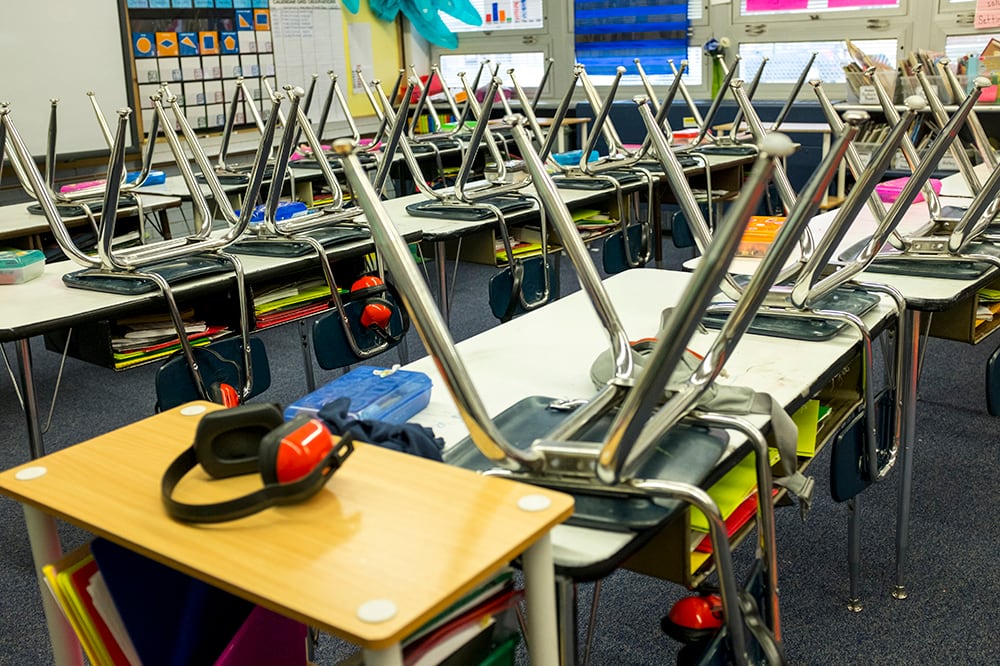Principals from more than 40 Upper Manhattan schools have joined calls to delay the reopening of in-person learning.
School leaders from District 6, which includes Inwood and Washington Heights, are asking Mayor Bill de Blasio and Chancellor Richard Carranza for more time for logistical planning. They join dozens of principals in Brooklyn’s districts 13 and 15 who have put forth proposals calling for such a delay. Echoing those districts’ concerns, the city principals union also asked for a delay, a move the union representing teachers supports.
“Asking an undervalued and under-resourced system to do three times the work with even fewer resources is unrealistic and unattainable,” District 6 principals wrote in a letter Tuesday. “We cannot do a better job with remote learning [and well over half of all students will be remote each day whether children are fully remote or doing blended learning], while pretending that we can be back in the buildings at the same time.”
The education department’s hybrid models, with children attending school buildings five days every two or three weeks to allow for up to about 11 students in a room at a given time, won’t work for their communities, the principals said. These schedules don’t allow parents to return to their jobs, and they require schools to have twice as many teachers as they currently have, the letter stated. They also fear it’s not “physically and emotionally appropriate” to restrict children’s movement in a 6-square-foot area for 5.5 hours a day.
In recent days, city officials have dismissed the growing chorus of calls from school leaders and educators that classrooms won’t be ready by Sept. 10, and instead announced various protocols expected to be in place for reopening.
The city would ensure that every New York City school building will have a full-time nurse by the start of the school year, de Blasio said last week. Principals will have a special hotline to request additional safety supplies, like masks, that will be “immediately delivered,” the mayor said.
“We’re throwing in the kitchen sink here to keep the schools safe,” de Blasio told reporters Tuesday. “I cannot even give you the whole list because it’s so long, of all the measures being taken to make sure schools are safe and clean and healthy – one measure layered on top of another, on top of another.”
School staff typically spend just two days together in the building getting their classrooms in order before welcoming students, but principals argue this is no typical year. Staff will use that same timeline to prepare their socially distanced classrooms and make sure they understand the protocols of the physical environment as well as curriculum changes — where remote and in-person teachers will have to figure out new ways to collaborate, as schools are expected to focus on trauma-informed instruction.
The mayor’s recently announced efforts still fall short of the requests of not just unions, but groups of rank-and-file educators who have publicly banded together to air their concerns. They say they remain unsure of many logistics, such as who will teach the students in the hybrid classes on the days children are fully remote. The education department has also failed to provide any guidance for how to deliver services for students with disabilities and multilingual learners, the principals noted. Many questions remain about how schools will train everyone around new health and safety protocols.
Miranda Barbot, a spokesperson for the education department, cited the city’s low virus positivity rate, hovering around 1%, as a reason schools are safe to reopen — a point educators have said isn’t fair in ZIP codes where the infection rate is higher.
Officials are sharing guidance frequently, Barbot added.
“Educators and school leaders are doing tremendous work to make the most important school year in history safe and healthy for children,” she said, “and we know they need information and resources to make reopening possible.”
Similar to requests from other districts’ principals, those in District 6 are asking city officials to hold remote-only instruction “until the system is prepared to implement verifiable safety protocols.”
Many educators have been skeptical that building ventilation systems will be fixed or personal protective equipment will arrive in time for the start of school despite city assurances. As the system races to fix poor ventilation at hundreds of buildings across the city, officials have said they won’t open any classrooms with faulty, unrepaired systems.
The letter asks the education department to phase students into in-person learning after “health and safety protocols” have been met, though it doesn’t specify specific benchmarks. In an attempt to address child care, the letter also asks city officials to open each elementary school as a child care center for students who are scheduled for remote learning but cannot safely stay home alone without an adult, though it is unclear from the letter who would staff such centers.
Julie Zuckerman, one of the principals who signed the letter, told Chalkbeat she would like her school to go fully remote while staffing her building with teachers who would supervise children of families struggling to find child care.
“It’s not about staff not recognizing that families need this — it’s a responsibility that we think is ours,” Zuckerman said. She’s trying to figure out how to provide that for her community, she said.
City officials have planned to offer child care to 100,000 children, but have not shared more details about who will have access to these seats or where they will be.







